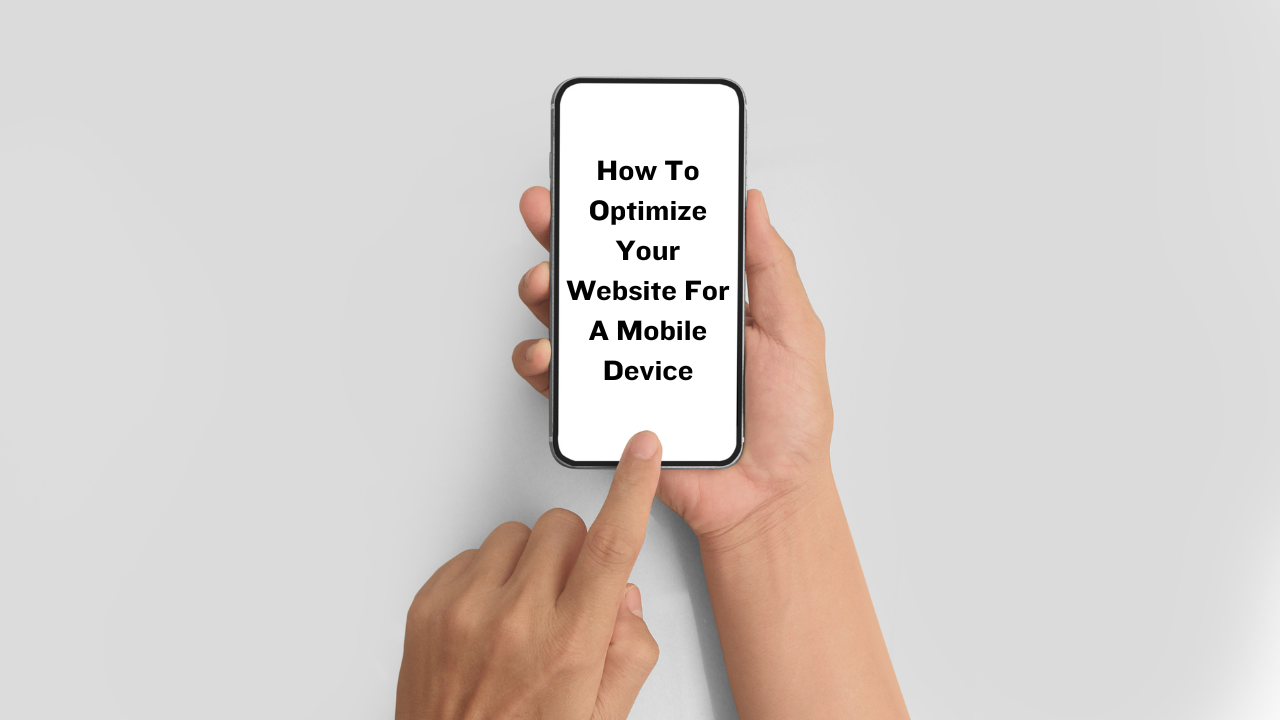Mobile devices, like smartphones and tablets, are the main way people access the internet globally. As mobile devices become more accessible and affordable, people increasingly rely on them for activities like browsing, shopping and more. Hence, mobile optimization for your website ensures that you can cater to this growing mobile user base.
Mobile phones account for 61% of organic search engine visits. A mobile-friendly website loads quickly, displays content in a readable format, and offers touch-friendly interfaces. By delivering a positive user experience, you can engage visitors, encourage longer browsing sessions, and increase conversions.
Why mobile screen optimization is needed?
- A significant portion of the global population relies primarily on mobile devices like smartphones and tablets for internet access. As mobile devices become more accessible and affordable, people increasingly depend on them for various online activities, including browsing websites, shopping, and gathering information. Hence, optimizing your website for mobile allows you to effectively cater to this expanding user base.
- Mobile optimization improves user experience on smaller screens by making your website visually appealing, easy to navigate, and function seamlessly. A mobile-friendly website loads quickly, presents content in a readable format, and provides touch-friendly interfaces. Therefore, by delivering a positive user experience, you can engage visitors, encourage longer browsing sessions, and increase conversion rates.
- Search engines, such as Google, give priority to mobile-friendly websites in their search results. Google primarily considers the mobile version of a website for ranking purposes with its mobile-first indexing. Having a mobile-optimized website can enhance your search engine visibility and organic traffic, resulting in increased brand exposure and potential customers.
- Users may encounter issues like slow loading times, distorted layouts, or challenging navigation if your website is not optimized for mobile. These problems can frustrate visitors and lead to high bounce rates, where users quickly leave your site without engaging with the content. Therefore mobile optimization helps address these issues and encourages users to spend more time on your site, explore multiple pages, and increase the likelihood of conversions.
- In today’s digital landscape, having a mobile-friendly website is no longer a choice but an expectation. If your competitors have optimized their sites for mobile while you haven’t, you run the risk of losing potential customers to them. By staying ahead of the curve and providing an exceptional mobile experience, you can gain a competitive advantage and attract as well as retain mobile users.
- People commonly use mobile devices for social media activities, including sharing interesting content or products. Therefore, optimizing your website for mobile makes it more shareable on social platforms, resulting in increased exposure and potential traffic from mobile users.
How to optimize your mobile/responsive screen for optimization?
Here are 10 tips to do it:
- Ensure that your website already follows mobile-friendly best practices, such as responsive design, fast loading times, and easy navigation, before implementing schema markup. This will provide a solid foundation for mobile optimization.
- Make sure your website is constructed using responsive design methods, which enable the layout, images, and content to adapt automatically and suitably to the screen size of the device in use. As a result, users will have an excellent viewing experience.
- When designing your website, adopt a mobile-centric mindset, considering the restricted screen space. Opt for a simplified layout, employing a single column design that emphasizes vital content. Steer clear of large, intricate tables or multiple columns that may pose challenges in legibility on smaller screens.
- Simplify your navigation menu for mobile devices. Use a hamburger menu icon that expands when clicked to display the navigation options. Hence, this saves space and ensures a cleaner, more user-friendly interface.
- Make certain that interactive components like menus, dropdowns, and form fields are user-friendly for touchscreens. Hence, incorporate sufficient spacing between clickable elements to minimize unintended taps.
- Optimize your website for mobile search engines by implementing mobile-friendly meta tags, using descriptive titles and headings, and ensuring that your site is easily crawlable by search engine bots.
- Consider the limited screen space on mobile devices and prioritize essential content. Avoid long paragraphs and use headings, bullet points, and concise sentences to improve readability.
- Most mobile devices do not support Flash, and pop-ups can be intrusive on smaller screens.
- Avoid using these elements to provide a better user experience.
- Test your website across various mobile devices and screen sizes to ensure consistency and optimal performance. Use responsive design testing tools or browser developer tools to simulate different devices.
- Use legible fonts and appropriately sized buttons that are easy to tap on touchscreens. Make sure that the text is readable without zooming and that the buttons are large enough to be pressed accurately.
Conclusion
By adhering to these mobile optimization guidelines, you can deliver a smooth and user-friendly experience for individuals who visit your website using mobile devices.


